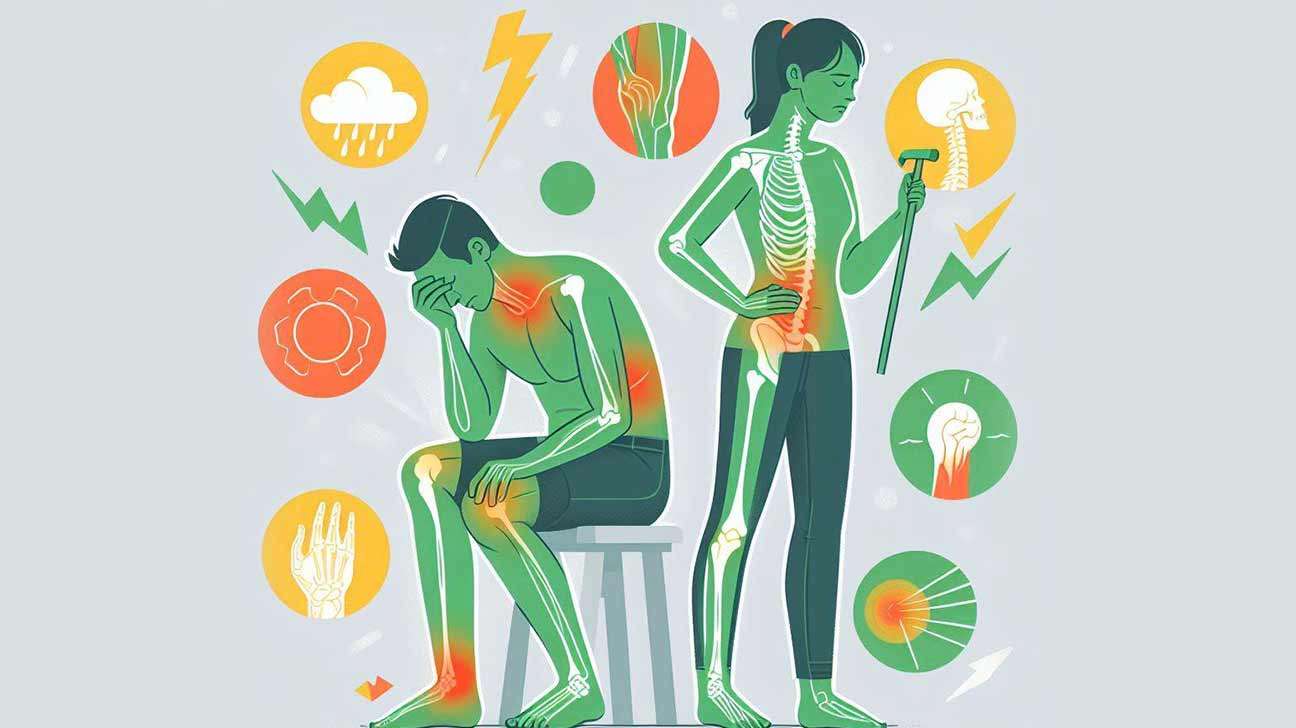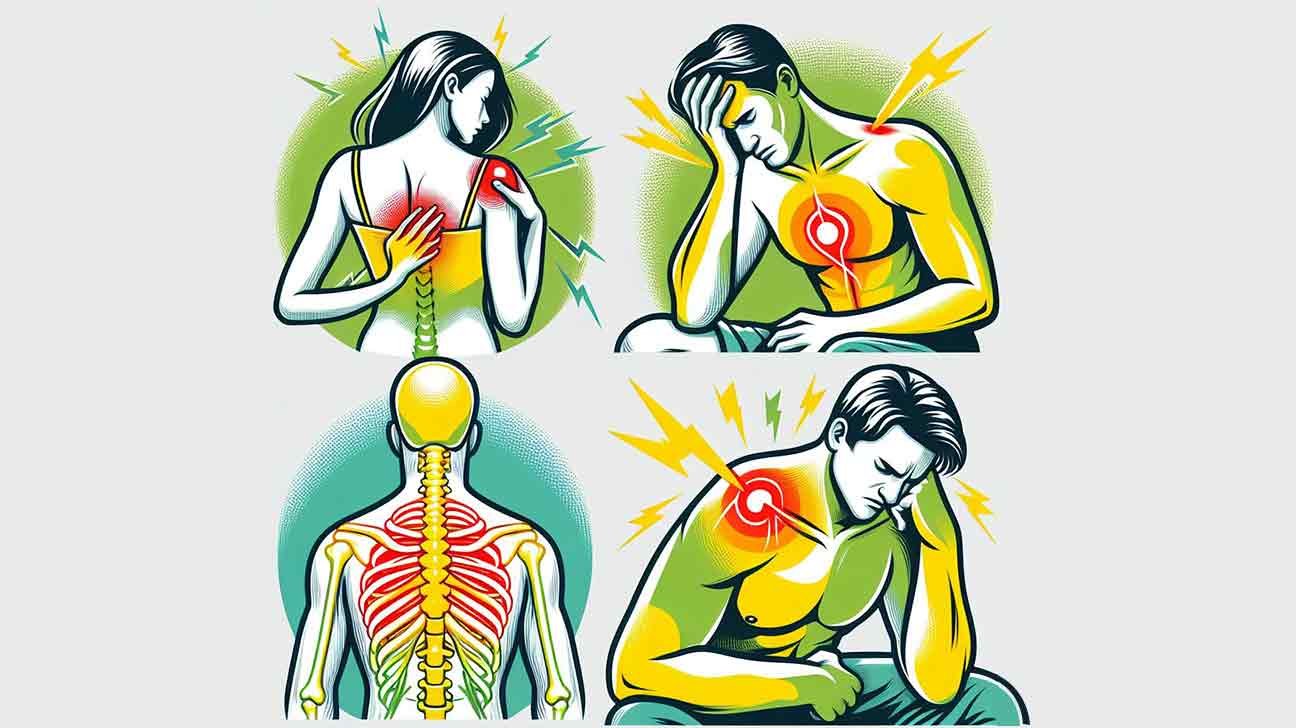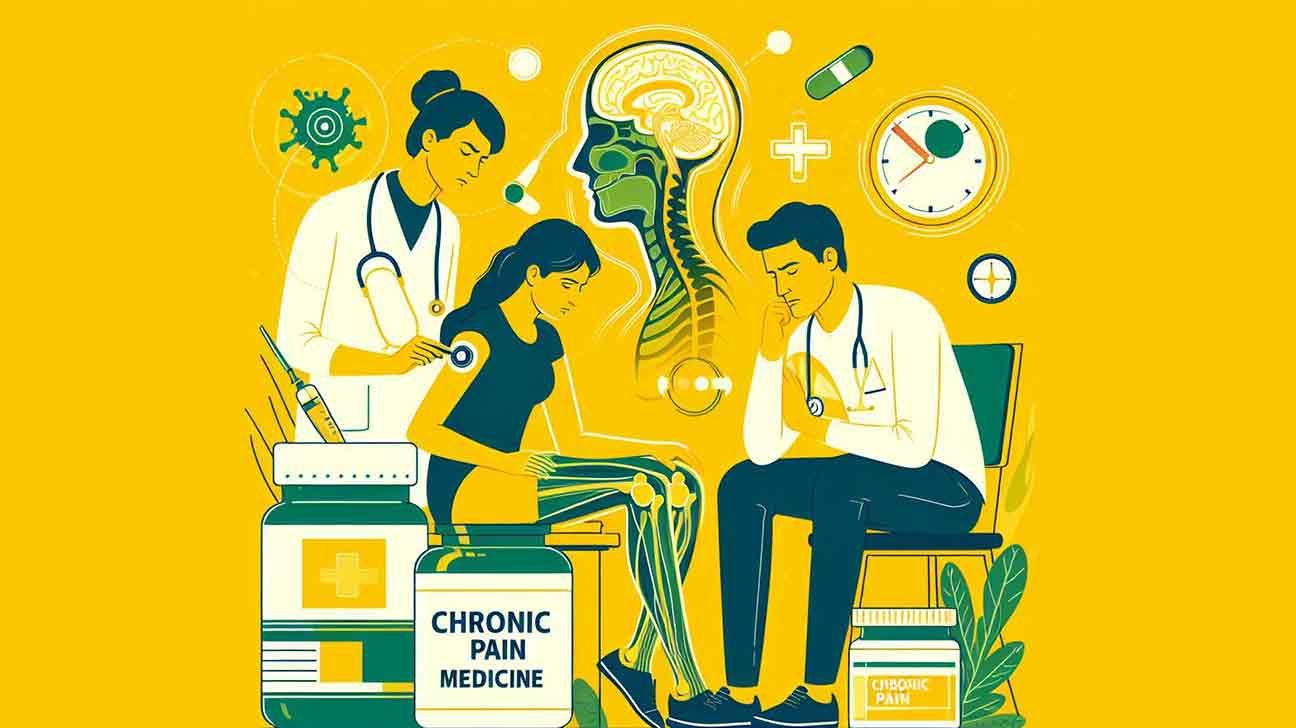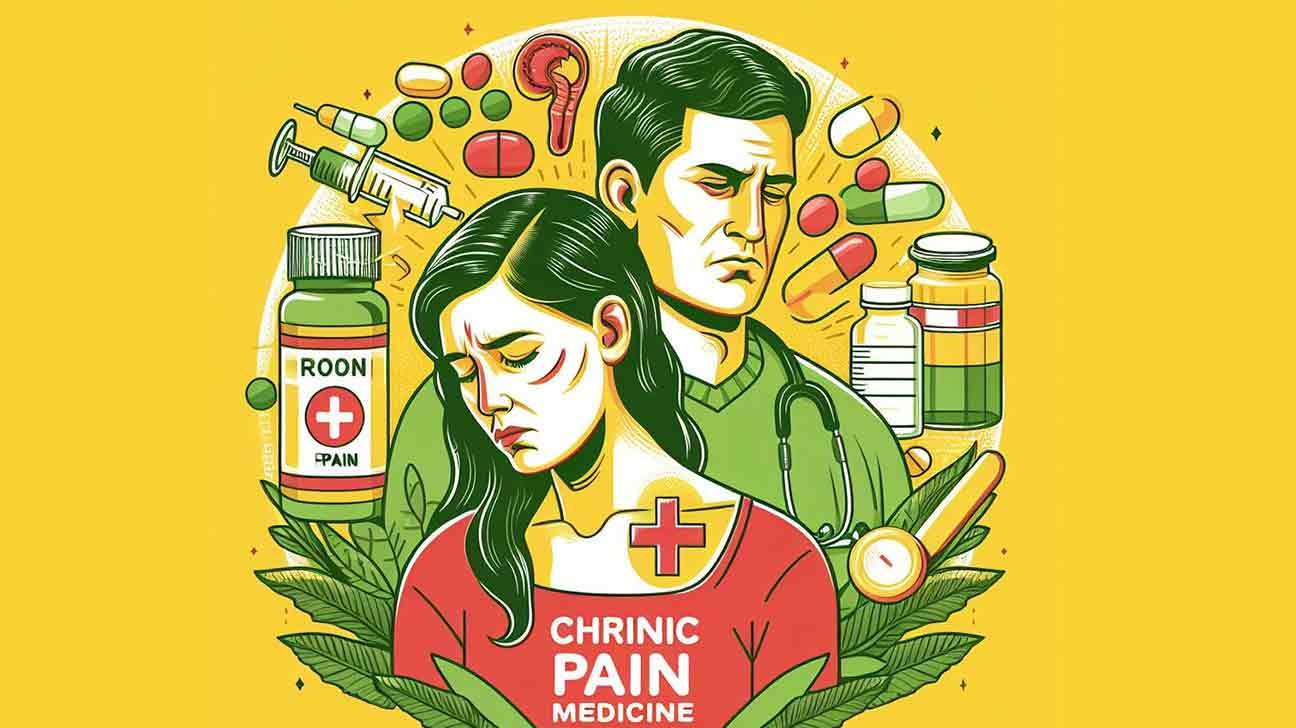
What is Chronic Pain ?
Chronic pain is defined as persistent or long-lasting pain that extends beyond the typical time it takes for an injury or illness to heal. Unlike acute pain, which serves as a warning signal and is typically short-lived, chronic pain can persist for weeks, months, or even years. It can result from various medical conditions or injuries, and it may not always have an obvious cause.
Key features of chronic pain
- Duration: Chronic pain lasts for an extended period, typically beyond the expected time for healing.
- Complexity: Chronic pain is often complex and may involve a combination of physical, emotional, and psychological factors.
- Impact on Quality of Life: Chronic pain can significantly affect a person’s quality of life, leading to limitations in daily activities, reduced mobility, and emotional distress.
- Causes: Common causes of chronic pain include conditions such as arthritis, back pain, migraines, nerve damage (neuropathy), and fibromyalgia. In some cases, the cause may be unclear.
- Persistent Pain Signals: In chronic pain, the nervous system may continue to send pain signals to the brain even after the initial injury or illness has healed.
- Psychosocial Factors: Emotional and psychological factors, such as stress, anxiety, and depression, can contribute to the perception and experience of chronic pain.
- Treatment Challenges: Chronic pain management can be challenging, and treatment approaches often involve a multidisciplinary approach, combining medications, physical therapy, psychological support, and lifestyle modifications.
Types of Chronic Pain
Chronic pain can manifest in various forms and affect different parts of the body. Here are some common types of chronic pain:
- Chronic Back Pain
- Arthritis Pain
- Neuropathic Pain
- Headaches and Migraines
- Fibromyalgia
- Chronic Pelvic Pain
- Chronic Neck Pain
- Chronic Nerve Pain
- Complex Regional Pain Syndrome (CRPS)
- Chronic Abdominal Pain
- Chronic Pelvic Floor Pain
- Chronic Jaw and Facial Pain
- Post-Surgical Pain
- Central Pain Syndrome
- Chronic Musculoskeletal Pain

Symptoms
It can manifest in various ways, and the signs and symptoms may differ based on the underlying cause and the individual’s unique experience. Here are common signs and symptoms associated with this pain:
- Persistent Pain: The primary characteristic of chronic pain is the presence of persistent or recurrent pain that lasts for an extended period, typically beyond the expected time for healing.
- Discomfort or Aching: Continuous discomfort, aching, or soreness in a specific area or throughout the body can be indicative of chronic pain.
- Reduced Mobility: Chronic pain can lead to stiffness and reduced range of motion in affected joints or muscles, making it difficult to move freely.
- Fatigue: Chronic pain is often associated with fatigue and a sense of exhaustion, as the body may be continuously dealing with pain signals.
- Sleep Disturbances: Individuals with chronic pain may experience difficulties sleeping or staying asleep due to discomfort or pain interference.
- Mood Changes: Chronic pain can affect mood, leading to irritability, anxiety, depression, or a decrease in overall well-being.
- Changes in Appetite: Pain and discomfort may influence appetite, leading to changes in eating habits, weight loss, or weight gain.
- Concentration and Memory Issues: Chronic pain can impact cognitive function, causing difficulties with concentration, memory, and decision-making.
- Muscle Tension: Prolonged pain can contribute to muscle tension and tightness, which may exacerbate discomfort.
- Headaches: Chronic pain conditions, especially those affecting the neck and back, can contribute to persistent headaches.
- Sensitivity to Touch: Increased sensitivity or pain with touch, known as allodynia, may be present in some chronic pain conditions.
- Emotional Distress: Chronic pain often takes a toll on emotional well-being, leading to feelings of frustration, helplessness, or despair.
It’s important to note that chronic pain is a complex and individualized experience. The signs and symptoms may vary from person to person, and the impact on daily life can be significant. Seeking medical attention is crucial for a proper diagnosis and the development of an appropriate treatment plan. Healthcare professionals, including pain specialists, can work with individuals to address both the physical and emotional aspects of chronic pain.
Causes
This pain can have various causes, and it often results from complex interactions between physical, psychological, and environmental factors. Here are some common causes of this deases:
- Injury or Trauma
- Musculoskeletal Conditions
- Neurological Disorders
- Inflammation
- Autoimmune Diseases
- Chronic Headaches and Migraines
- Psychological Factors
- Central Sensitization
- Posture and Movement Patterns
- Lifestyle Factors
- Genetic Factors
- Previous Surgeries
- Environmental Factors
It’s important to note that this is a subjective experience, and its management often requires a comprehensive and multidisciplinary approach. Identifying the underlying cause is crucial for developing an effective treatment plan. Individuals experiencing this pain should seek medical evaluation and work closely with healthcare professionals to address both the physical and psychological aspects of their condition.

Treatment of Chronic Pain
The treatment of chronic pain typically involves a multidisciplinary approach, addressing both the physical and psychological aspects of pain. The goal is to manage pain effectively, improve function, and enhance the overall quality of life. Treatment plans are often individualized based on the specific causes and characteristics of the chronic pain. Here are common approaches to chronic pain management:
Medications:
- Analgesics (Pain Relievers): Over-the-counter or prescription medications like acetaminophen, nonsteroidal anti-inflammatory drugs (NSAIDs), and opioids may be used.
- Antidepressants: Certain antidepressants, such as tricyclic antidepressants (TCAs) or serotonin-norepinephrine reuptake inhibitors (SNRIs), can help manage chronic pain, especially neuropathic pain.
- Anticonvulsants: Medications like gabapentin or pregabalin may be prescribed for neuropathic pain.
Physical Therapy:
- Physical therapists design exercise programs to improve flexibility, strength, and mobility. Manual therapy and other techniques may also be employed.
Interventional Procedures:
- Nerve Blocks: Injections of local anesthetics or steroids around nerves can provide temporary relief.
- Epidural Injections: Steroids injected into the epidural space may reduce inflammation and pain, particularly for spinal conditions.
- Radiofrequency Ablation: A procedure that uses heat to interrupt nerve signals and reduce pain.
Cognitive-Behavioral Therapy (CBT):
- CBT helps individuals manage and cope with chronic pain by addressing thought patterns, emotions, and behaviors associated with pain.
Occupational Therapy:
- Occupational therapists help individuals adapt their daily activities to manage pain and improve function.
Mind-Body Techniques:
- Relaxation Techniques: Yoga, meditation, and deep breathing exercises can help manage stress and reduce pain perception.
- Biofeedback: A technique that helps individuals control physiological responses, such as muscle tension, to alleviate pain.
Acupuncture:
- Traditional Chinese medicine practice involving the insertion of thin needles into specific points on the body to stimulate energy flow and reduce pain.
Exercise and Rehabilitation Programs:
- Structured exercise programs, including aerobic and strength-training exercises, can improve overall physical health and reduce pain.
Medical Cannabis:
- In some regions, medical cannabis may be prescribed for this deases management, particularly for conditions associated with neuropathic pain.
Pain Management Clinics:
- Comprehensive pain management clinics may offer a range of services, including medical, physical, and psychological therapies, to address chronic pain.
It’s crucial for individuals experiencing chronic pain to work closely with healthcare professionals to develop a personalized treatment plan. Open communication, lifestyle modifications, and a collaborative approach are essential components of effective chronic pain management. Always consult with a healthcare provider before starting any new treatment or medication.
Chronic Pain Medication
Medications are prescribed based on the underlying cause and nature of the pain. It’s important to note that medication alone may not be sufficient for managing chronic pain, and a comprehensive treatment plan often involves a combination of therapies. Always consult with a healthcare professional before starting or changing any medication regimen. Here are some common types of medications used for chronic pain:
- Nonsteroidal Anti-Inflammatory Drugs (NSAIDs)
- Acetaminophen
- Opioids
- Antidepressants
- Anticonvulsants
- Muscle Relaxants
- Topical Analgesics
- NMDA Receptor Antagonists
- Corticosteroids
It’s essential to use medications under the guidance of a healthcare professional, as they can have side effects, interactions with other medications, and potential risks. Additionally, a comprehensive approach to chronic pain management may involve physical therapy, psychological therapies, lifestyle modifications, and other non-pharmacological interventions. Always communicate openly with your healthcare provider to ensure the safest and most effective treatment plan for your specific condition.

Natural Remedies
Natural remedies for chronic pain can be complementary to medical treatments and may help manage symptoms. However, it’s important to consult with a healthcare professional before trying any new remedies. Here are some natural approaches that some people find helpful:
- Turmeric and Curcumin: Turmeric contains curcumin, which has anti-inflammatory properties. It may help reduce inflammation and alleviate pain. Consider incorporating turmeric into your diet or taking curcumin supplements.
- Ginger: Ginger has anti-inflammatory and analgesic properties. It can be consumed in various forms, such as fresh ginger in food, ginger tea, or supplements.
- Omega-3 Fatty Acids: Found in fish oil, flaxseed, and chia seeds, omega-3 fatty acids have anti-inflammatory properties that may help reduce pain.
- Capsaicin: Capsaicin is found in chili peppers and can be applied topically as a cream or patch. It may help relieve pain by desensitizing nerve receptors.
- Acupuncture: This traditional Chinese medicine practice involves inserting thin needles into specific points on the body. Some people find relief from this deasesthrough acupuncture.
- Yoga and Tai Chi: These mind-body exercises can improve flexibility, balance, and strength, potentially reducing pain and improving overall well-being.
- Mindfulness Meditation: Mindfulness techniques may help manage pain by promoting relaxation and reducing stress. Mindfulness-Based Stress Reduction (MBSR) programs have been shown to be beneficial.
- Heat and Cold Therapy: Applying heat or cold packs to affected areas may help reduce inflammation and ease pain. Experiment with both to see which works best for you.
- Massage Therapy: Regular massage may help relax muscles, improve blood circulation, and reduce pain.
- Aromatherapy: Some people find relief through the use of essential oils such as lavender, peppermint, or eucalyptus. These can be used in diffusers or diluted with carrier oils for massage.
Remember that what works for one person may not work for another, and individual responses to natural remedies can vary. It’s crucial to work with healthcare professionals to create a comprehensive pain management plan tailored to your specific needs. Additionally, these natural remedies should not replace prescribed medications or other treatments without consulting a healthcare provider.
